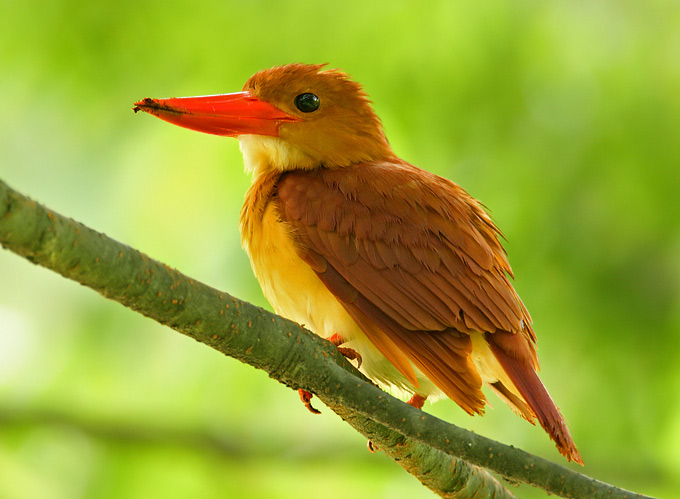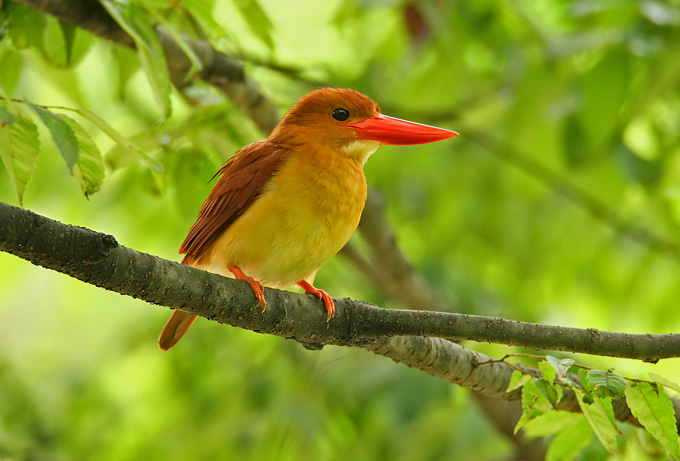The
Ruddy-breasted Crake (
Porzana fusca), or
Ruddy Crake, is a waterbird in the rail and crake family
Rallidae.
Its breeding habitat is
swamps and similar wet areas across south
Asia from the
Indian subcontinent east to south
China,
Japan and
Indonesia. It has been recorded as a vagrant from the
Australian territory of
Christmas Island. This crake nests in a dry location on the ground in marsh vegetation, laying 6-9
eggs. It is mainly a permanent resident throughout its range, but some northern populations
migrate further south in winter.
The Ruddy-breasted Crake is about 22-23 cm long. The body is
flattened laterally to allow easier passage through the reeds or
undergrowth. It has long toes and a short tail. Coloring includes a pale
brown back and chestnut head and underparts, with white barring on the
flanks and undertail. The bill is yellowish, and the eyes, legs, and
feet are red.
The sexes are similar, but juveniles are dark brown with some white spotting.
These birds probe in mud or shallow water and also pick up food by sight. They forage for shoots,
berries and
insects, as well as large
snails, which they eat by using their bills to peck through the hard shell.
Ruddy-breasted Crakes are territorial, but are quite secretive, hiding amongst grassy shrubs and bushes when disturbed.


